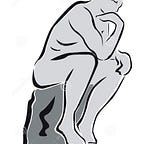There are 2 types — A and B. Both are useless or harmful.
Type A — Adulterated advice, indirect, flexible, couched in social niceties, friendly and useless.
Type B — Brutal advice, direct, inflexible, unforgiving, unpleasant and harmful.
Type A can also be harmful. Type B can also be useless.
Rarely, both are useful, when the giver and receiver are capable, receptive, and discerning. Such situations are unusual. For ages, advice givers and seekers have thrived on such extraordinary hopes.
Mixing Type A and B to get a useful and harmless Type C is fantastic, difficult and confusing. Preachers & shamans indulge in C. The vast majority stick to A & B.
Advice can be passively given or received, through views, opinions, casual reading, discussions etc. Advice can be actively given or sought, through experts, purposeful reading, discussions etc.
Whether active or passive, all advice are either Type A or B.
Advice can be given when the receiver is not seeking, ready or willing. It can be sought when the giver is not capable, ready or willing. When giver and receiver are not in sync, advice becomes more useless, or worse, more harmful.
More the advice given, lesser its use and more its harm. Cumulatively, over time, we have given and received more advice. Collectively, our seeking and giving of advice has possibly rendered more harm than use.
More advice we give and seek, less discerning we become. And less useful and more harmful any further advice is.
Can we optimize? Is there a way to reduce harm and increase usefulness?
As a seeker of advice
1. Choose sources wisely
2. Stick to a few
3. Avoid passive Type B (selectively read, hear, see, talk & do)
4. Less is better
As a giver of advice
1. Choose targets wisely
2. Stick to a few
3. Avoid active Type B (show, don’t tell)
4. Less is better
This is Type C.
